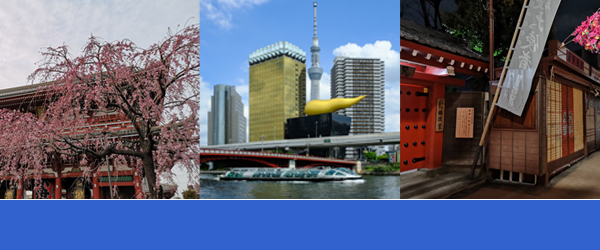Cherry Blossom is coming! In this article, we will delve into the mindset, philosophy, and essence of Japan. Immerse yourself in a journey that unveils the deeper aspects of Japanese culture, providing you with a more comprehensive understanding of the richness that defines this fascinating country. Only by exploring the cherry blossom, we can truly grasp an important facet of Japan’s essence.
And in the next article we will explore the best places to see cherry blossoms and experience hanami, so don’t miss out!”

The cherry blossom, known as Sakura in Japanese, is far more than a mere herald of spring; it is a symbol deeply rooted in Japan’s rich culture, captivating hearts and minds for centuries. This delicate flower, with its ephemeral beauty, stands as an emblem of life’s transience and seasonal renewal. In this article, we will delve into the fascinating history and meaning of Sakura, as well as its impact on various facets of Japanese culture and society.
Sakura is not just a flower; it is a cultural phenomenon that unfolds every spring across Japan, painting landscapes in shades of pink and white. The blossoming of cherry trees marks the beginning of Hanami season, a centuries-old tradition where friends and families gather to admire and celebrate the fleeting beauty of the flowers. This act, known as “flower viewing,” goes beyond mere observation; it is a moment of reflection and connection with nature, where life’s fragility merges with the exuberance of spring.
As we immerse ourselves in Sakura’s history, we discover its deeply rooted presence in Japanese culture, from ancient poems in classical literature to its place in mythology. The cherry blossom has become a symbol of renewal, purity, and the fleeting nature of human existence. Exploring this narrative, we will delve into the various species of Sakura, each with its unique characteristics contributing to the diversity and richness of this iconic flower.
In the following sections, we will unravel the secrets of Hanami, explore Sakura’s presence in art and literature, and examine how it has left an indelible mark on fashion and pop culture. Join us on this journey through Sakura’s petals as we peel back its layers of meaning and uncover the enchantment surrounding this iconic flower of Japan.
The history of Sakura is a tapestry woven with threads of cultural significance, poetic symbolism, and profound meaning. Originating in Japan, the concept of cherry blossoms has deep roots in the nation’s narrative, with early references found in ancient poetry, such as the timeless works of the Manyoshu anthology. Here, Sakura transcends mere botanical existence, becoming a metaphor for the transient beauty and fragility of life.
In Sakura’s fleeting bloom, Japan finds a metaphor for life’s brevity. The ephemeral cherry blossoms, adorning landscapes in hues of pink and white, mirror the transient nature of existence. Celebrated during Spring, these blossoms symbolize life’s impermanence, inviting people to cherish fleeting moments. The cyclical return of Sakura each spring enriches Japan’s cultural identity. Even samurais embraced Sakura, seeing in its brief yet spectacular display a reflection of the transitory nature of their own lives—a poignant reminder that beauty lies in the ephemeral.
The symbolic importance of Sakura reached new heights during the Edo period, where it became a prominent motif in ukiyo-e woodblock prints. Artists like Hokusai and Hiroshige captured the delicate beauty of cherry blossoms, immortalizing them in art that transcended time. This artistic representation further cemented the cherry blossom’s status as a cultural icon, permeating various aspects of Japanese life.
The diversity among Sakura species adds a unique dimension to the captivating world of these iconic flowering trees. While the most commonly associated image of Sakura is the five-petaled cherry blossom, there are several varieties, each with its distinctive features and individual charm.
Somei Yoshino (Prunus yedoensis):

This variety is the most well-known and widespread in Japan. Its pinkish-white flowers, with five petals, cluster in dense blossoms, creating a dazzling display during Hanami. Somei Yoshino is a revered symbol and is often planted in parks and temples.
Shidare-Zakura (Prunus pendula):

With gracefully arching branches, Shidare-Zakura presents a poetic image. Its flowers are similar to Somei Yoshino, but the cascading growth adds a distinctive touch, especially when reflected in ponds or streams.
There are much more, but this article is not a botanic paper, you can find the differents variety of sakura in wikipedia.
The diversity in Sakura varieties not only extends to the appearance of the flowers but also to their regional symbolism. Each region of Japan may have its own native variety, contributing to the rich palette of colors and forms that define the Hanami landscape throughout the country.

Hanami, translated as “flower viewing,” is an enchanting tradition deeply embedded in the Japanese cultural fabric. It revolves around the joyous observation of cherry blossoms during their ephemeral peak. This centuries-old practice unites people from all walks of life in a celebration of nature’s beauty and the transient essence of existence.
The Hanami season typically occurs in spring when Sakura trees burst into a magnificent display of delicate blooms. Parks, temples, and gardens become vibrant canvases adorned with the soft hues of cherry blossoms. Families, friends, and even strangers gather beneath these flowering canopies, laying out picnic blankets to partake in the shared experience of Hanami.
Beyond the visual spectacle, Hanami holds profound cultural significance. It is a time for reflection on the transient nature of life, echoing the fleeting beauty of the cherry blossoms. The act of appreciating these blooms is not merely a passive observation but a collective acknowledgment of the impermanence of all things.
Throughout history, Hanami has evolved from an aristocratic pastime during the Heian period to a widespread cultural phenomenon accessible to all. The practice extends beyond daylight hours, with nighttime illuminations transforming Sakura-lined landscapes into ethereal realms, creating a unique and magical atmosphere.
Hanami has become more than just a natural spectacle; it is a social event that fosters unity and a sense of shared appreciation for life’s fleeting moments. The joy derived from Hanami transcends generations, making it a timeless tradition that connects the past, present, and future.

The ethereal beauty of Sakura has long been a muse for artists and writers, transcending its botanical existence to become a potent symbol in various creative expressions within Japanese culture.
In the world of art, Sakura has left an indelible mark, particularly in traditional woodblock prints known as ukiyo-e. Renowned artists like Katsushika Hokusai and Utagawa Hiroshige immortalized the delicate blossoms in their works, capturing the essence of Hanami and the changing seasons. The intricate details and vibrant colors of these prints not only depict the visual allure of Sakura but also convey the emotional depth associated with its fleeting beauty.
Contemporary artists continue to draw inspiration from Sakura, with its imagery permeating modern paintings, sculptures, and installations. The fusion of traditional and contemporary art forms showcases the enduring allure of Sakura as a timeless motif.
Literary Inspirations:
Sakura’s influence extends seamlessly into the realm of literature, where it has inspired poets and writers for centuries. In classical Japanese poetry, particularly the tanka and haiku forms, cherry blossoms often serve as poignant metaphors for the brevity of life and the transient nature of beauty.
Authors like Natsume Sōseki and Yukio Mishima have incorporated Sakura into their novels, using its symbolism to evoke a sense of fleeting moments and the passage of time. The cherry blossom’s presence in literature adds layers of meaning, enriching narratives with its profound cultural significance.
From ancient waka poems to contemporary novels, Sakura’s role in literature reflects the enduring impact of this delicate flower on the Japanese literary landscape.
Musical Harmonies:
In the realm of music, Sakura’s influence is evident in both traditional and contemporary compositions. Traditional folk songs like “Sakura Sakura” have become cultural treasures, echoing the beauty and transience associated with cherry blossoms. In modern times, Sakura’s thematic presence can be found in various musical genres, from classical compositions to pop songs, where its symbolic resonance continues to inspire new melodies and arrangements.
Manga Aesthetics:
Within manga, Sakura blossoms often feature prominently in visual storytelling. The delicate petals might symbolize a character’s emotional journey, mark a pivotal moment in the storyline, or serve as a backdrop to convey a particular atmosphere. Manga artists skillfully integrate Sakura’s symbolism, enhancing the visual impact and emotional depth of their narratives.
A lovely anime movie is “5 centimeter per second”, The title of the movie refers to the speed at which cherry blossom (sakura) petals fall. This image is used as a metaphor for the fleeting nature of time and the rapidity with which things can change.
Now, let’s delve into some intriguing facts about Sakura.
- Unique Varieties: There are over 600 varieties of cherry trees in Japan, each with its unique blooming characteristics and shapes.
- National Flower of Japan: Although there’s no official national flower in Japan, Sakura is considered de facto due to its cultural significance.
- First Recorded Hanami: The first written record of Hanami dates back to the 8th century during the Nara period, where the aristocracy enjoyed the beauty of blooming cherry blossoms.
- Longevity of Trees: Some famous cherry trees, like the “Jindai-zakura,” are over a thousand years old, highlighting the endurance of these trees.
- Sakura in Space: In 2008, the Japan Aerospace Exploration Agency (JAXA) sent Sakura seeds to space as part of an experiment on germination at the International Space Station.
- Sakura on Japanese Currency: The cherry blossom has appeared on various Japanese coins throughout history, symbolizing the country’s natural beauty and cultural connection to cherry trees.
- Washington D.C. Cherry Blossom Festival: In gratitude for Japanese generosity, Washington D.C. received thousands of cherry trees in 1912. Today, the National Cherry Blossom Festival attracts visitors from around the world.
Sakura, with its fleeting blooms and profound symbolism, encapsulates the essence of Japanese culture. From Hanami traditions to global celebrations, the cherry blossom’s allure is timeless. Its brief yet spectacular display remains a poignant reminder to cherish life’s ephemeral beauty and find joy in transient moments.








